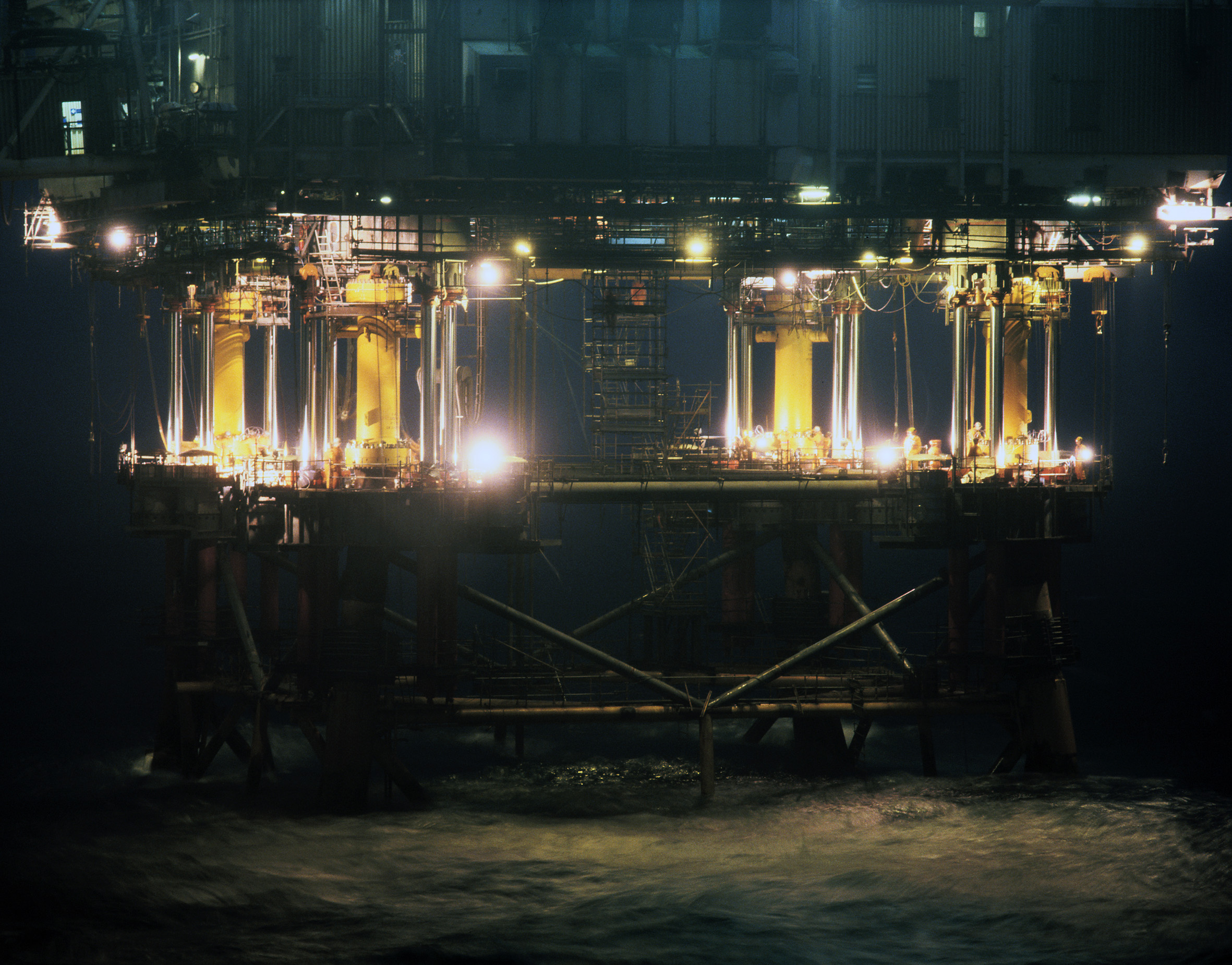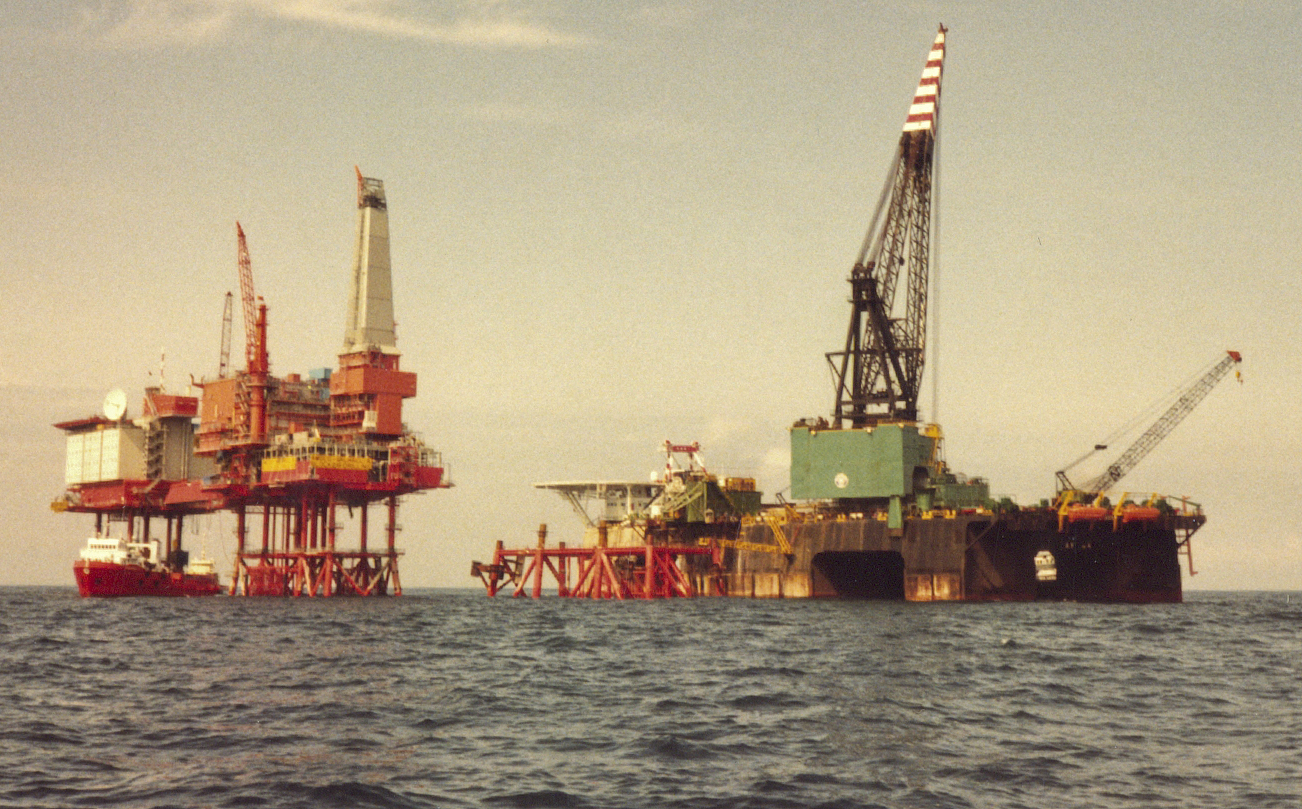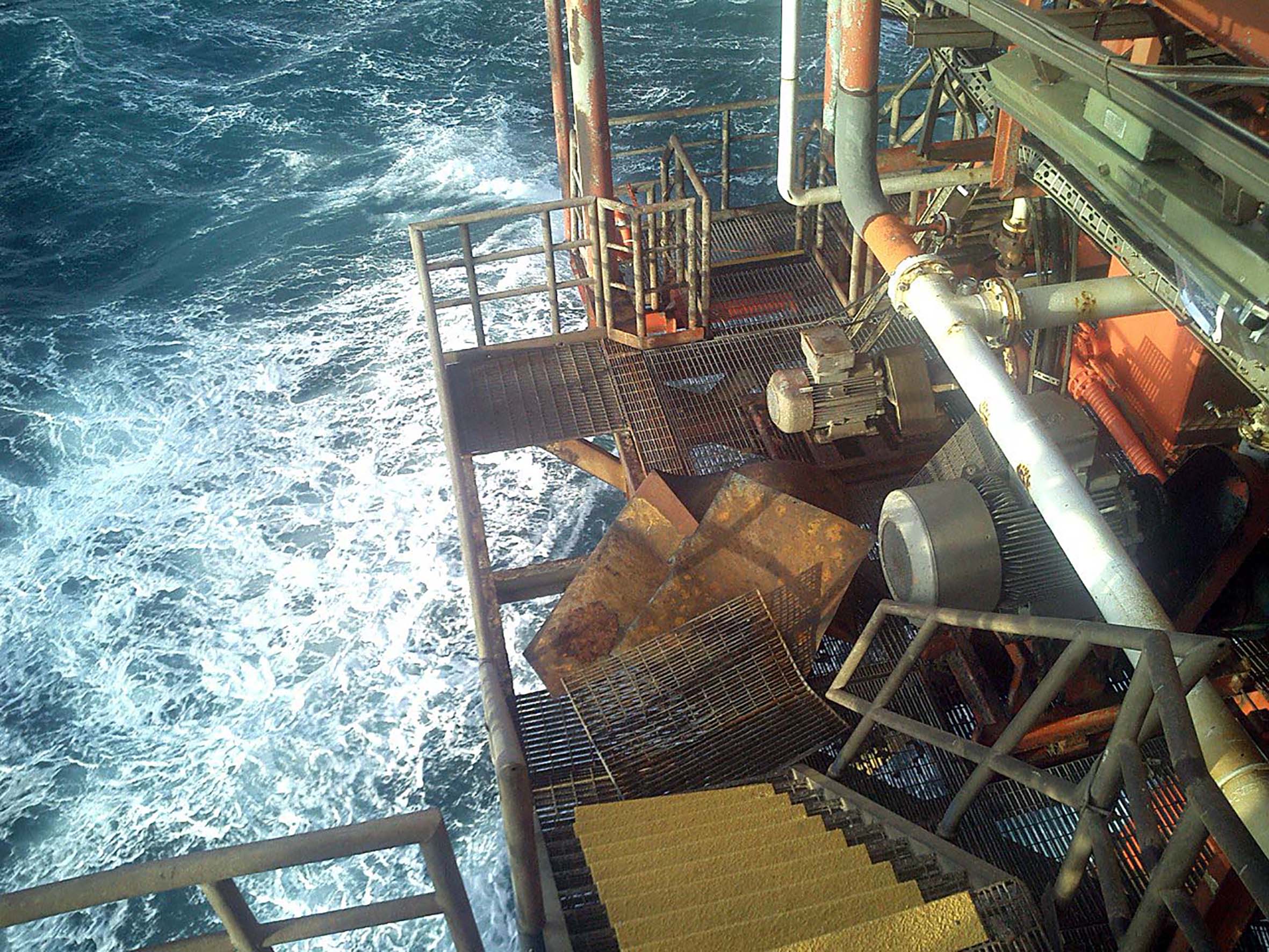Subsidence – challenges and consequences

 Innsynkning – utfordring og konsekvenser
Innsynkning – utfordring og konsekvenserWhile the geology in the Valhall area is similar, it differs from Ekofisk in reservoir thickness. The latter measures about 300 metres deep, while the other reaches only some 60 metres. Seabed subsidence was accordingly not expected to be as extensive on Valhall. But the 1984 survey showed that the clearance between the field’s platforms and the sea surface had been reduced by 30 centimetres.[REMOVE]Fotnote: Rasen, Bjørn (2007): LF6A. Valhall at 25 … and it’s only the beginning , p 93.
New measurements carried out in June and November 1987 confirmed that the seabed on Valhall had subsided even more and possibly at a faster pace. Fortunately, these initial assumptions proved unfounded. A further survey in 1988 allowed the estimated annual rate of subsidence to be reduced to about 25 centimetres.
Such phenomena in areas with carbonate rocks are not unknown. Chalk has an unfortunate tendency to dissolve when water or other liquid flows through it. The result is the creation of large caverns which can collapse to form sinkholes.[REMOVE]Fotnote: Wikipedia , November 2015. Subsidence is also known from Lake Maracaibo in Venezuela and from US petroleum fields.
Since the problem was not happening so fast on Valhall as on Ekofisk, its installations were in no immediate danger. It might take 10-15 years before anything had to be done – and Valhall’s producing life at the time was not expected to extend beyond 2005.
Further measurements on the field in 1993 showed that subsidence had declined to between six and 10 centimetres per year. The seabed was 2.25 metres lower than when production began.
By the time the licence expired in 2011, the total figure would be just over four metres. Enough freeboard would remain beneath the platform cellar decks to stay in operation.[REMOVE]Fotnote: NTB, 10 March 1993, “Valhall synker, men ombygging kan unngås”.
Injecting water into the reservoir was one way to counteract the subsidence, but Valhall’s chalk structure meant it was seen as less suitable for this method of maintaining formation pressure. Gas injection offered an alternative, but was not investigated in any serious way.[REMOVE]Fotnote: NTB, 29 November 1986, “Valhall synker i samme tempo som Ekofisk”.
 Utbygginger på Valhall år for år, feltet, forsidebilde,
Utbygginger på Valhall år for år, feltet, forsidebilde,When Valhall became operational in 1982, the Amoco/Noco group expected it to produce for roughly 20 years and to yield about 250 million barrels of oil. These estimates were sharply upgraded in the early 2000s, when BP had become operator – after merging with Amoco in 1999 – and wanted to continue developing the field. That involved adopting new technological solutions to extend Valhall’s producing life. Some of these related to the reservoir compaction which was causing the seabed subsidence.
The new development plans were based on the government’s approval of a water injection project for Valhall in 2000, and its extension of the field’s licence from 2011 to 20128. An extended production life also meant it would be necessary to do something about the field centre – not least because of the subsidence. Both jacking-up the original platforms – as had already been done on Ekofisk – and the construction of new installations were considered.
Subsidence of the seabed meant that BP also had to build a new process and hotel (PH) platform for the field as part of its further development (Valhall VRD) programme. The choice in 2004 lay between two concepts – two new platforms or a combined structure – and the licensees finally opted for the last of these. That was because they reached agreement on taking power from shore for the new unit rather than installing gas turbines, reducing topside weight. In addition, electrically driven rotating machinery such as compressors required much less maintenance than turbines, were easier to regulate, reducing staffing and speeded pay-back (see separate article on new process and hotel platform).
At the time, the BP group as a whole had adopted ambitious goals for reducing releases of environmentally harmfully gases and chemicals. The company also wanted to use Valhall as a demonstration of the way old fields could be operated efficiently and with a high recovery factor.[REMOVE]Fotnote: Teknisk Ukeblad , 1 October 2004: “Elektrisk Valhall-plattform”.
 Ny Valhall prosess- og boligplattform
Ny Valhall prosess- og boligplattformA massive wave which hit the field during a storm in November 2006 caused substantial damage to the process and quarters platforms. Several lifeboats were damaged, for example. This incident prompted the introduction of special emergency response measures when extreme weather was forecast, including the removal of personnel. That also prompted BP to speed up its VRD plans, and the project team came under heavy pressure to complete its work. The job was thereby schedule-driven from the start. Inadequate time and resources in the early phase meant the weight and dimensions of the new platform were underestimated. This was not spotted until late in the detail design stage.[REMOVE]Fotnote: Norwegian Petroleum Directorate report, October 2013, Evaluation of projects implemented on the Norwegian shelf , 33.
The combined installation became operational in January 2013. Subsidence had then gone so far that the cellar deck on all three existing platforms could be destroyed by a hundred-year wave.[REMOVE]Fotnote: Teknisk Ukeblad , 22 April 2005, “Valhall elektrifiseres”. They were therefore no longer safe for use in every kind of weather. The quarters platform is now shut during the winter and will be out of commission completely by the end of 2017.
Plans called for the VRD project to be completed in November 2010 at a cost of NOK 15.4 billion. However, it proved very demanding and extensive. More than two years late, it was brought in at a cost of NOK 24.9 billion. Well-related expenses also increased by NOK 10.8 billion, more than four times the original budget.[REMOVE]Fotnote: Norwegian Petroleum Directorate report, October 2013, Evaluation of projects implemented on the Norwegian shelf , 32.
The Valhall field is expected to be able to produce up towards 2050.

